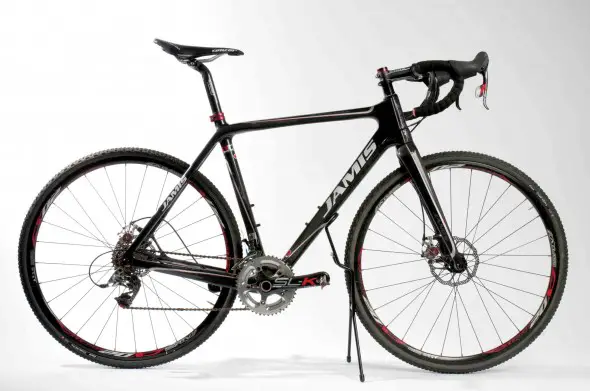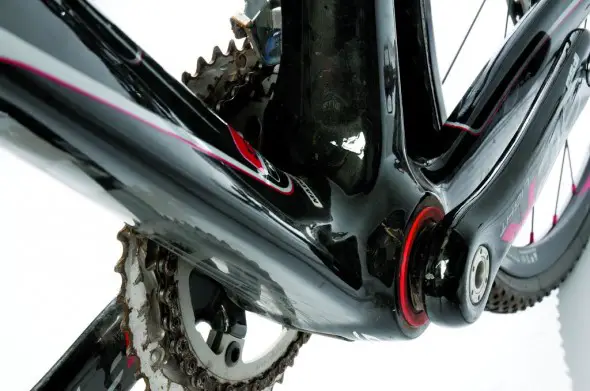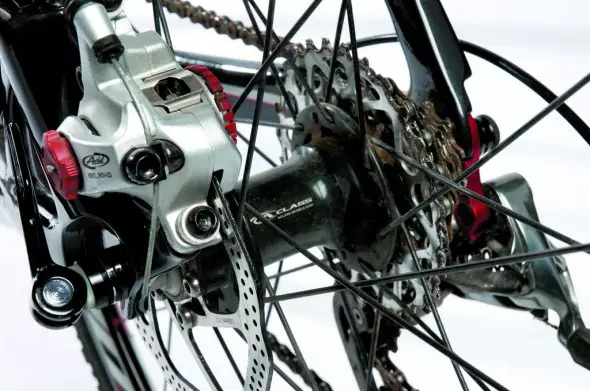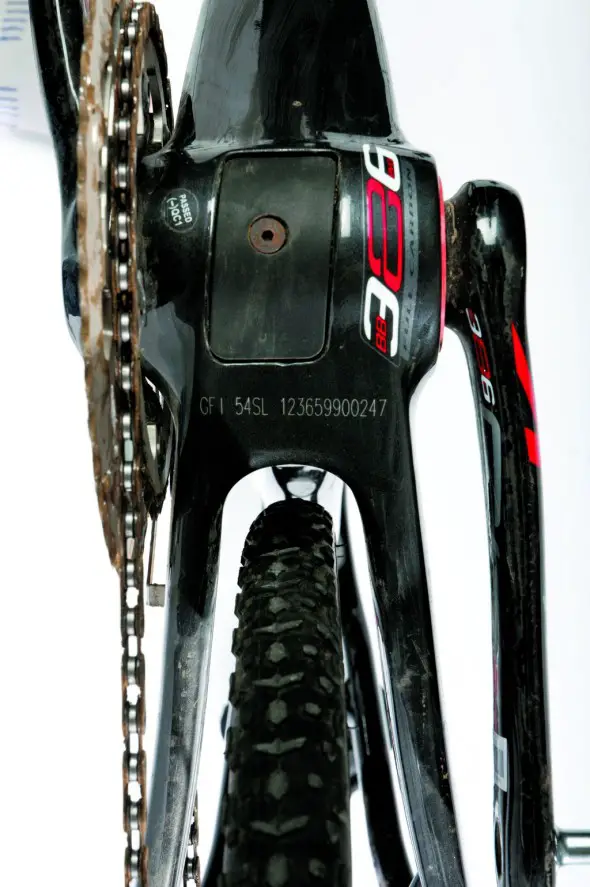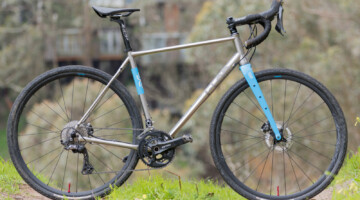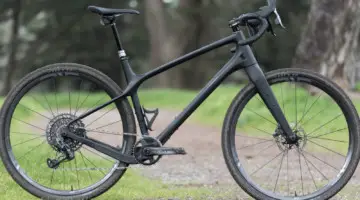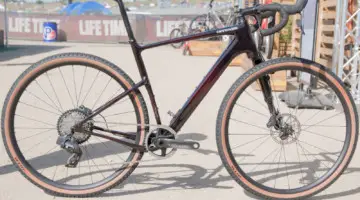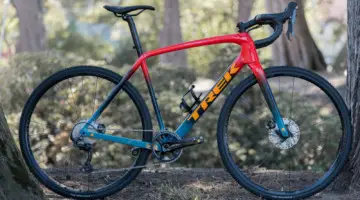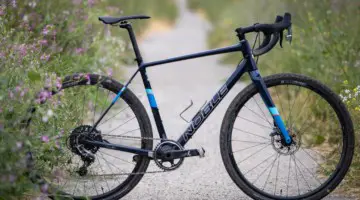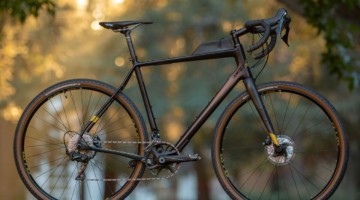Our latest issue of Cyclocross Magazine, Issue 19, boasted more bike reviews than we’ve ever had before. Among these was the Jamis Supernova. Check out its vital stats here, and make sure you pick up a copy of Issue 19 to see what we had to say about it!
by Clifford Lee
A few tidbits from the review:
We first reviewed the Jamis Supernova in Issue 3, back in the summer of 2008. My have we grown since then. Jamis, too, has grown – expanding their ’cross line-up, continuing to improve upon their designs and, for 2013, taking their top-end model to the land of carbon. We gave high marks to the original Supernova, one of the first US production models to approach cyclocross as a race-only endeavor, rather than as a long way home on a commute. The aluminum frame, 18.7 pound bike cost only $1850 with a Rival build. Will its younger, flashier brother earn the same reputation? Read on to find out.
The 2013 Supernova is a near-total makeover from the 2012 model, which was crafted from Kinesium aluminum and sported a PF30 bottom bracket. For 2013, Jamis has taken their flagship ’cross bike down the carbon road and molded the Supernova from a blend of high- and mid-modulus carbon fiber, using a technique they call ‘NearNet’ molding. Lost in the move from aluminum to carbon are the mounts for rack and fenders, but with the leap in price, this is a racing thoroughbred rather than a do-it-all workhorse.
The Supernova has also gotten a new bottom bracket—the BB386 EVO. Jamis’ Todd Corbitt told us that the EVO provides the platform to design a stronger, lighter and stiffer frame and makes the bike compatible with a wider range of crank options. The beefier EVO bottom bracket and oversized seat tube area were also designed to withstand the excessive pressure put on this spot by cyclocross remounts. The EVO uses a 30mm alloy spindle of the original BB30 design, and incorporates press fit bearing cups instead of direct fit bearings. Everything fits into a wider 86.5mm bottom bracket shell, which Jamis claims allows for a 30% increase in seat and down tube diameters.
Jamis worked in full internal routing for the Supernova, leaving a clean look and, hopefully, a clean(er) bike post-race. The routing includes options for Di2 and is also forward-compatible with wider mounts that will be able to accommodate hydraulic lines once the technology makes its way to cyclocross.
The Supernova comes in two builds: the Team, which we tested and is outfitted with SRAM Red, and the Elite, shaving cost with an Apex build. The most obvious aspect of the build, however, is not the groupo, but the wheels. With any new bike coming prebuilt with disc wheels, the choice of which wheels are chosen is sure to raise speculation, especially at this price point. While bikes with traditional braking systems can get away with skimping on the wheels due to the relative guarantee that anyone dropping this amount of cash has their own set of A wheels, the nascent blessing of ’cross-specific discs mean that few have splurged for high-end race wheels, making the build choice all that more important. (See Issue 18 for some disc wheel reviews).
Jamis chose to go with an Alex CXD2T tubeless wheelset, with 23.6mm tall, 21.4mm wide tubeless ready rim, DT-Swiss spokes laced to Alex sealed bearing disc hubs. Avid BB7 mechanical disc brakes with Ti hardware and organic brake pads stop the 160mm (front) and 140mm (rear) rotors. Vittoria Cross XG TNT Tubeless tires, 32mm, complete the wheelset. Combined, front and rear wheels came in at 8.1 pounds on our scale. It’s not light, but we applaud Jamis for offering up a tubeless wheelset to the masses, and have long been fans of tubeless.
The rest of the build, however, was much more svelte: along with the 2012 SRAM Red drivetrain (minus the new Yaw front derailleur) and levers, the Supernova features a Ritchey Pro cockpit, headset and seatpost, FSA SLK Light EvO crankset (46/36T) with ceramic bearings, and a Selle San Marco Concor saddle. Without the wheels, the build comes in at an impressive 10.4 pounds for a size 54.
Wheel choice surely was a difficult choice for Jamis, as the bike is already in the higher tiers of price, and Jamis chose to put the money into the components rather than the wheels. Was it worth it? Check out a digital copy of Issue 19 for the full review, with instant delivery.
Find out how the Jamis Supernova measures up and be sure to check out all the ’cross bikes in our cyclocross bike directory.
MSRP: $5200
Frame: Nearnet Molded Carbon, Gloss Black
Fork: Jamis Cross carbon, post disc brake mounts with integrated carbon cable cradle, stainless axle interfaces
Drivetrain: SRAM Red
Cassette: SRAM OG-1070 11×28
Crankset: FSA SLK Light EVO
Brakeset: Avid BB7 mechanical disc
Wheelset: Alex CXD2T Tubeless
Tires: Vittoria Cross XG TNT, 32c
Handlebar/Stem: Ritchey Pro EVO Curve / Ritchey Pro 4-axis
Seatpost: Ritchey Pro Carbon
Saddle: Selle San Marco Concor
Weight: 18.5 lbs w/o pedals, 10.4 w/o wheels
Country of Origin: Taiwan
More info: www.jamisbikes.com
Want to read the full review? To see what our testers thought about after putting it through some muddy races, check out Issue 19 of our print mag. Make sure you’re subscribed to Cyclocross Magazine (subscribe digitally to receive Issue 19, or order it in the archive section of our subscription page).
Check our Issue 19 page for the full Table of Contents to see what else is in store, and stay tuned for more sneak peeks!













